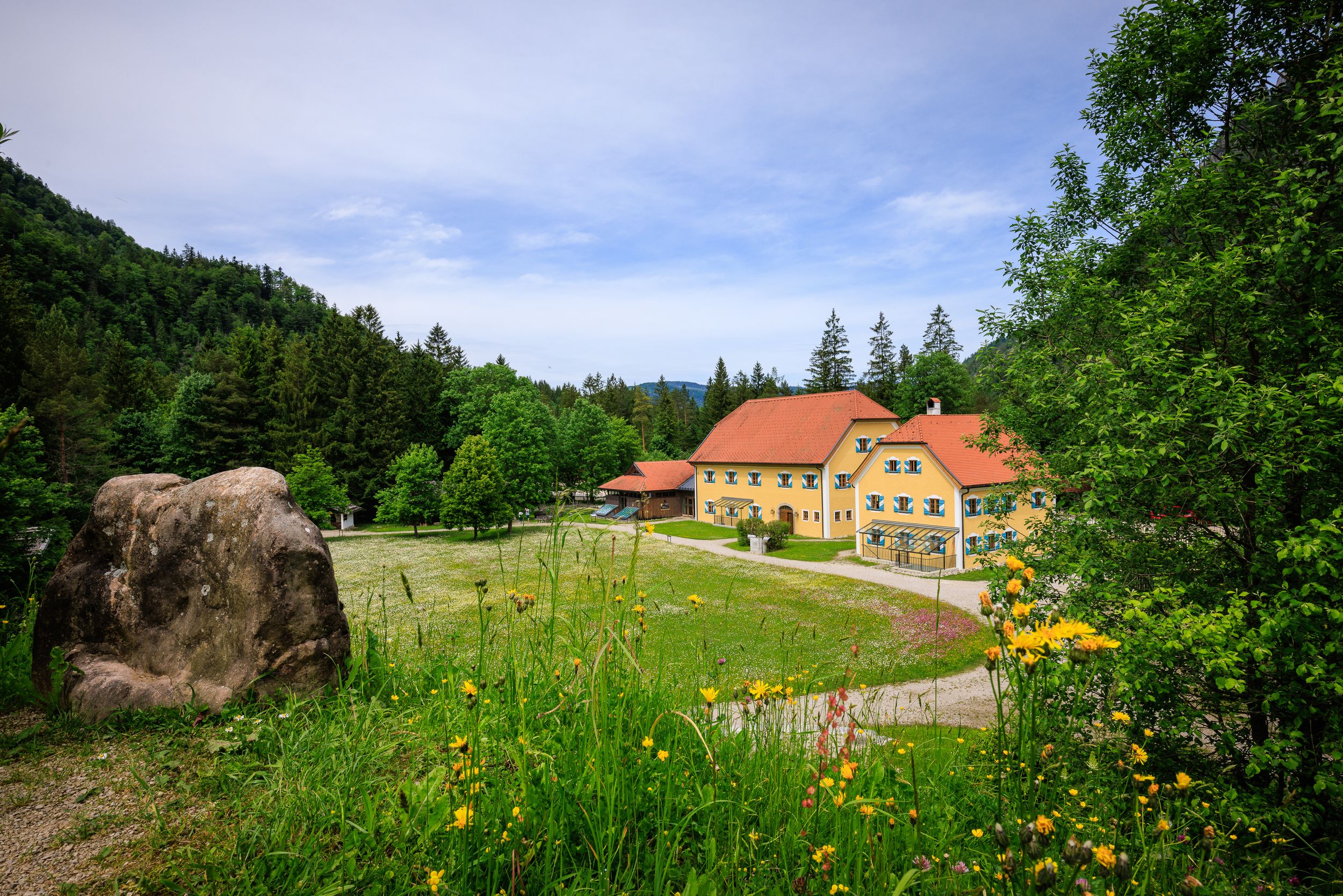Important information at a glance

Important information at a glance

Wood played a major role in people’s lives until well into the 19th century. It was a fuel and a material for construction and manufacturing. Houses, ships, carts, crockery, cutlery and even tools were all made of wood. In Chiemgau there was an especially large demand for wood, because enormous quantities were needed for iron smelting and salt production. A distinct group of tradesmen emerged: the woodcutters. The two-storey permanent exhibition at the Holzknechtmuseum Ruhpolding shows 400 years of their history on 300 square metres. How did the woodcutters live in the forest? What was their everyday working life like and what has changed up to the present? What is the relationship between man and forest and what challenges does the future hold?
The exhibition at the Holzknechtmuseum in the Laubau was fully redesigned two years ago. A multimedia journey through time has been created over two storeys. Instead of display cases, there are room-sized illustrations, family-friendly activities and interactive stations for listening, smelling, touching and watching.
Immediately, the loud warning cry is heard: "Obacht, Baam foid - Watch out, tree falling!", drawing visitors into the middle of the action. The slanting partitions in the room convey a feel for the situation in the steep mountain forest and are intended to make it clear how arduous and costly logging work is in mountainous regions. You can have a go with a sapi. This pick was the most-used tool in the transportation of wood. With a mighty swing, its point was driven into the lying timber so that it could be lifted, pulled or turned. “At this station, you can physically experience how strenuous this work was,” says Museum Director Dr. Ingeborg Schmid. “The woodcutters worked from dawn to dusk, often for 16 hours, and moved the heavy trunks using only a sapi.”
Since prehistoric times, trees had been felled using axes, and this is also vividly shown in the exhibition. When the saw was introduced around 200 years ago, it revolutionised forestry work. Yields increased dramatically because less wood fell as chippings, which brought greater profits, especially for the clients. At first, however, the woodcutters resisted this change tenaciously. Because the saws were of poor quality and the work was correspondingly painful for their backs and hands. It was only with a donation for the purchasing of an organ for the parish church that the drift master and timber entrepreneur Veit Oberhauser was able to persuade the woodcutters to use the new tool.
Visitors can also get active building a wooden slide, the “loite”. In times past, they were used to take away the heavy trunks quickly and safely. Or working at the joystick of a modern timber-harvesting machine. Among the original objects and collector’s treasures there is even an elaborately restored “Bergkuli”. This is a self-propelled cable winch which was in use since the early 1950s. The role of women is also examined. They provided the men with clothing and food for the working week in the forest and earned extra income as “plant women” from tending saplings.